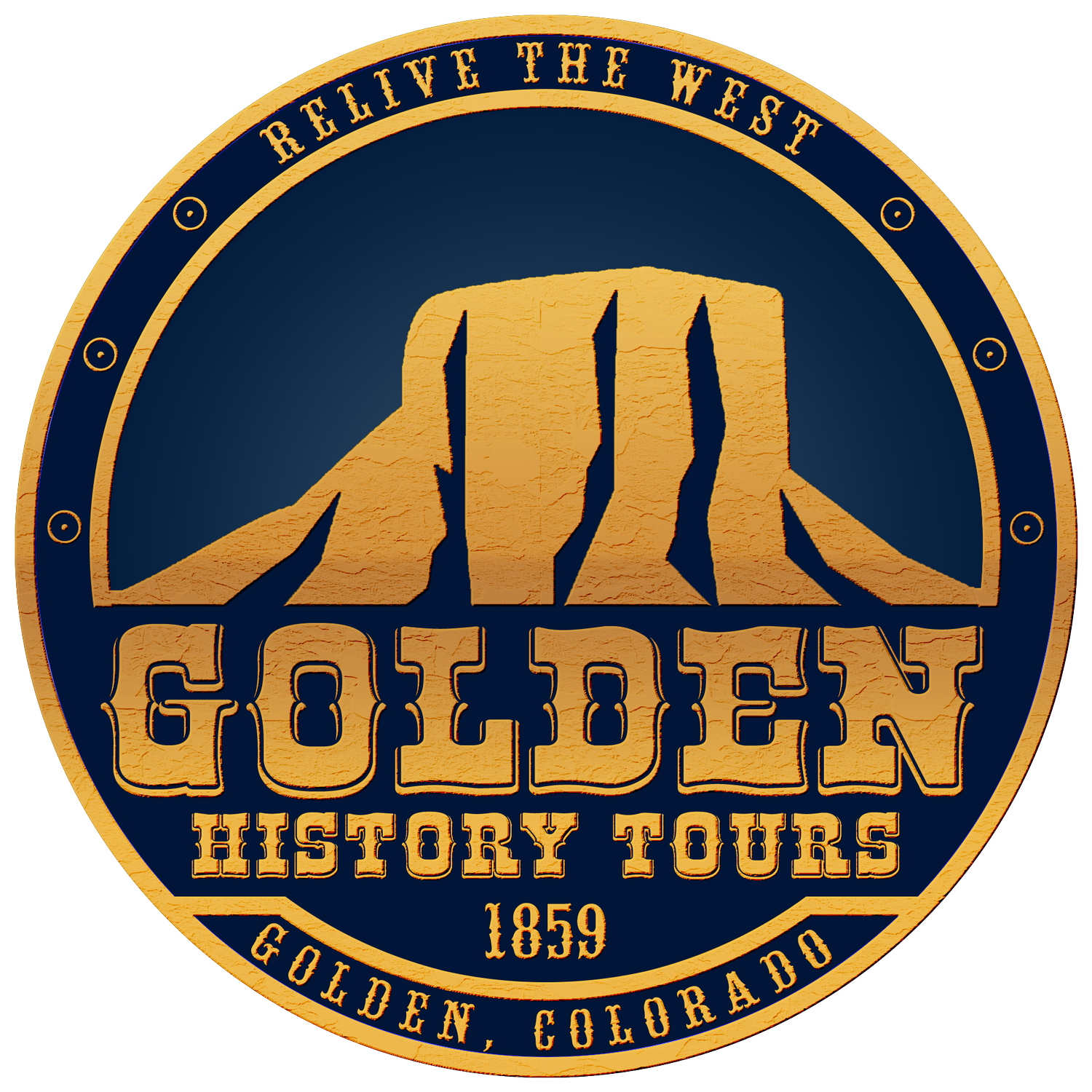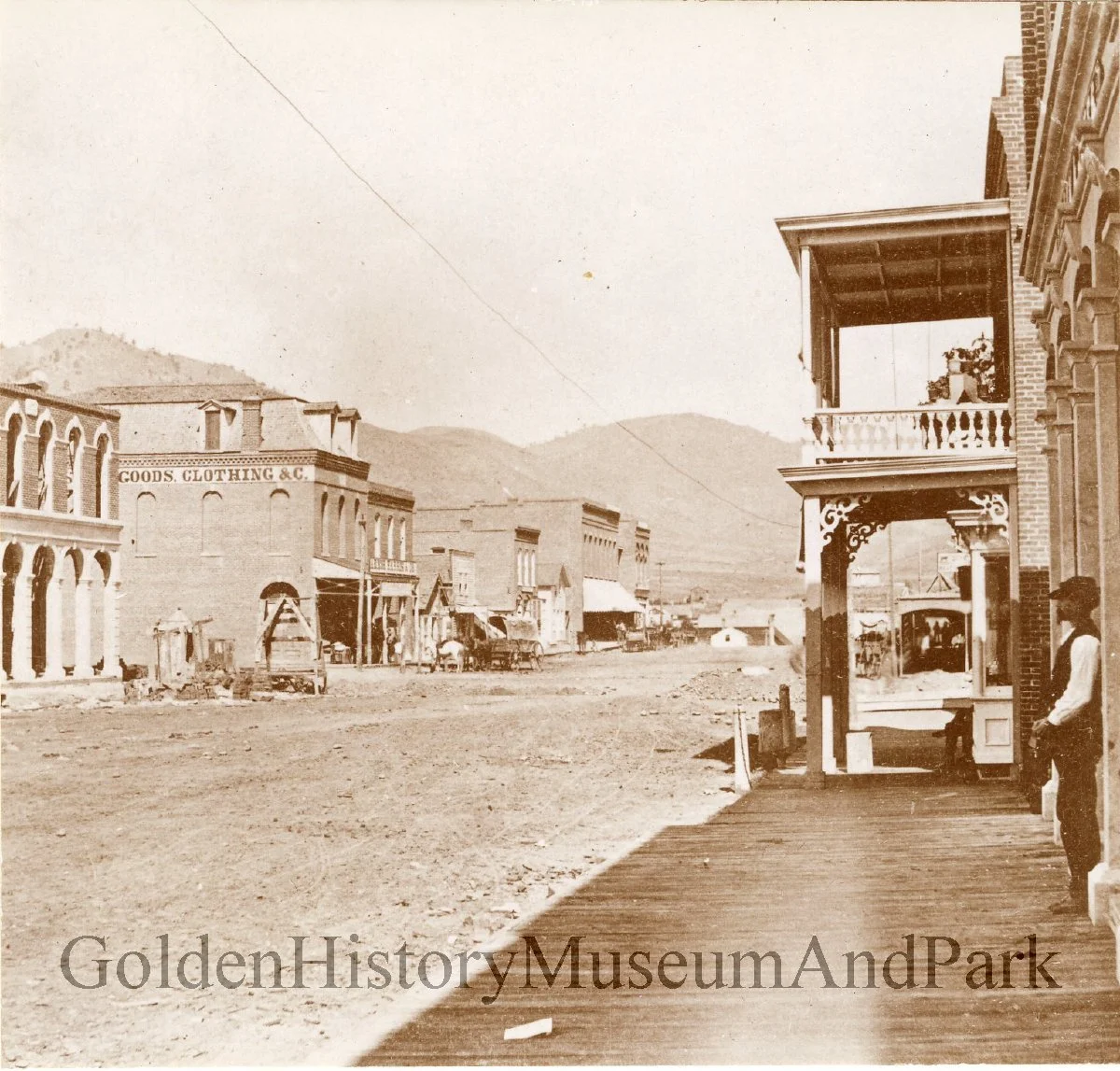The Town So Important It Was Capital Twice
Golden's Remarkable Political Legacy
Most people know Golden, Colorado as the home of Coors Brewery and gateway to the Rockies. But few realize this charming mountain town was actually chosen as a territorial capital not once, but twice – surviving government failures, political intrigue, and controversial vote-buying that shaped Colorado's destiny.
The Short Answer: Yes, Golden Was Colorado's Capital Twice
If you've ever wondered "Is there more to Golden, Colorado than the Coors Brewery?" the answer is more fascinating than you might expect. Golden City (as it was known then) served as:
Capital of Jefferson Territory (November 1860 - June 1861)
Capital of Colorado Territory (August 1862 - December 1867)
That's right – Golden was so important and well-positioned that when other capitals failed, territorial leaders kept coming back to this mountain gateway town.
First Time's the Charm: Jefferson Territory Capital (1860-1861)
Golden, Colorado, circa 1871.
Golden's first stint as a capital began during the chaotic gold rush era. When thousands of fortune-seekers flooded into the Pike's Peak region in 1859, they faced a serious problem: they were 600 miles from the nearest territorial government in Kansas, with no local law enforcement or legal system to resolve the inevitable disputes over mining claims.
By late 1859, the situation had become untenable. Claim-jumping was rampant, violence was increasing, and there was no legal framework to handle contracts, property disputes, or criminal matters. On October 24, 1859, desperate settlers gathered to vote on creating their own provisional government - the Territory of Jefferson, named after Thomas Jefferson.
When it came time to choose a capital, Golden City faced competition from other settlements, but the choice made practical sense. On January 2, 1860, Golden won the initial election by receiving more votes than all other communities combined - a testament to its growing population and influence. This was confirmed again in a second election on July 2, 1860.
The choice reflected Golden's clear advantages:
Geographic control: Positioned at the mouth of Clear Creek Canyon, Golden controlled the primary route to the mountain goldfields
Real infrastructure: Unlike many settlements that were little more than tent camps, Golden had substantial log and frame buildings
Business foundation: William A.H. Loveland and other entrepreneurs had established legitimate commercial operations
Population stability: Golden attracted families and permanent settlers, not just transient miners
From November 13, 1860 through June 6, 1861, Golden served as the seat of Jefferson Territory's government, handling everything from county organization to territorial legislation. While the federal government never officially recognized Jefferson Territory, it functioned effectively as a democratic government for over a year.
When Colorado City Failed as Capital (1862)
When the federal government created Colorado Territory in February 1861, territorial leaders chose Colorado City (now part of Colorado Springs) as the capital. The decision seemed reasonable on paper - the settlement was centrally located between Denver and the southern mining regions, away from the rough-and-tumble atmosphere of the northern goldfields.
The Colorado City Debacle
However, when the second territorial legislature convened in Colorado City on July 7, 1862, the harsh reality became immediately apparent. Colorado City was essentially still a frontier outpost, completely unprepared to host a territorial government.
Legislators arrived to find appalling conditions:
Single log cabin: The entire territorial government was expected to operate from one cramped log structure
No accommodations: There were no hotels or boarding houses - officials literally slept on the ground under the open sky
Missing essentials: The town lacked basic supplies like paper, pens, or ink needed for government business
No dignity: Grown men who were supposed to be running a territory were reduced to camping out like common travelers
The situation was so impossible that after just five days of attempting to function, the disgusted legislators voted on July 11 to abandon Colorado City entirely. They adjourned to reconvene in Denver on July 16, and swore never to return to the inadequate frontier settlement.
Colorado City had proven that good intentions weren't enough - a territorial capital needed real infrastructure, not just a central location on a map.
Golden's Strategic Return (1862-1867)
Looking north down Washington Avenue circa 1873.
After the Colorado City disaster, territorial leaders desperately needed a reliable solution. During the legislature's emergency session in Denver in August 1862, they faced a critical decision: where could they establish a permanent, functional territorial capital?
The answer was obvious to anyone who remembered Jefferson Territory's success. On August 4, 1862, they formally voted to relocate the capital to Golden City – making it the second time Golden had been chosen as a territorial capital.
Why Golden Was the Clear Choice
The contrast with Colorado City couldn't have been starker. Golden offered everything needed for effective territorial government:
The Loveland Building: William A.H. Loveland, the ambitious businessman and territorial legislator, had constructed Golden's first brick commercial building in 1863. Understanding the importance of Golden's new role, he expanded it in 1865-66 specifically to accommodate both houses of the territorial legislature on the upper floor. The building also housed the first Masonic Lodge in Colorado and Loveland's own mercantile business.
Proven infrastructure: Golden had real hotels like the Astor House where territorial officials could stay in dignity, established businesses that could supply government needs, and a functioning community that understood how to support governmental operations.
Strategic economic position: Golden sat at the gateway to Clear Creek Canyon, controlling access to the booming mining camps of Black Hawk, Central City, and Georgetown - the source of much of Colorado's territorial wealth.
William A.H. Loveland himself embodied Golden's commitment to territorial success. Not only did he provide the meeting space, but legend has it he offered visiting legislators free suits of clothes when their own became too worn from the rough frontier travel between Golden and mining camps.
From August 1862 through December 1867, this arrangement worked beautifully. The territorial legislature, territorial supreme court, and territorial library all operated from Golden. For five years, this mountain town successfully managed the affairs of the entire Colorado Territory - until Denver's money and railroad interests changed the political landscape forever.
The Controversial Loss to Denver (1867)
After five years of faithful service, Golden's reign as territorial capital ended in December 1867 in one of Colorado's most contentious political battles. The territorial legislature convened in Golden for what would prove to be the final time as the capital.
The Stakes and the Players
By 1867, the question of Colorado's permanent capital had become about much more than government convenience - it was about economic control of the territory's future. Two powerful factions had emerged:
The Mountain Faction supported keeping the capital in Golden. This group represented the mining interests, rural communities, and those who believed the capital should remain close to the source of Colorado's wealth in the mountains. They argued that Golden had proven its competence and deserved to remain the seat of government.
The Denver Faction wanted to move the capital to the rapidly growing plains city. Denver was becoming the territory's commercial and transportation hub, with better railroad connections and more population. They argued that Denver represented Colorado's future as a modern, connected territory.
The Deciding Vote
The debate was fierce and personal. When the final vote was cast on December 9, 1867, Denver won by a single vote – one of the closest and most consequential decisions in Colorado territorial history.
The narrow margin immediately raised suspicions. Within days, Golden's newspaper, The Colorado Transcript, published explosive accusations. Editor George West reported that approximately $5,000 in cash plus valuable town lots had been "pledged to influence the removal of the Capital to Denver."
In 1867 terms, this represented a massive sum - more than many families earned in several years. The allegations suggested that Denver interests had essentially bought the territorial capital. While these charges were never proven in court, they haunted Colorado politics for decades. Many in Golden and the mountain communities remained convinced that their capital had been stolen through political corruption rather than lost through legitimate democratic process.
The Colorado Transcript continued to hint at corruption for years afterward, with editor George West writing cryptically about the "influence" that had moved the capital to Denver.
Denver would remain territorial capital for the next nine years until Colorado achieved statehood in 1876 - cementing Denver's dominance while Golden became the "town that almost ruled Colorado."
Experience Golden's Capital History
Golden's remarkable story as a twice-chosen territorial capital comes alive when you explore the historic downtown where it all happened. The Loveland Building still stands at 12th and Washington (now the Old Capitol Grill), and dozens of other structures from the territorial era remain throughout downtown Golden.
Our locally-owned tours share the compelling stories behind Golden's unique political legacy, including details researched from historical archives and longtime Golden families. Whether you join our Wild West Walking Tour or Wild West Pub Crawl, you'll discover how this mountain town successfully governed a territory twice - and learn about the controversial politics that eventually moved the capital to Denver.
Book directly at goldenhistorytours.com to support local Golden historians and get the most comprehensive historical experience available.
Sources
Historical Documents & Archives:
Colorado Encyclopedia:
Official Government & Historical Sources:
Academic & Historical Analysis:
Book Sources:
"The Rise of the Centennial State: Colorado Territory, 1861-76" by Eugene H. Berwanger (University of Illinois Press, 2007)
Golden History Tours specializes in bringing Golden's remarkable past to life through expert-guided walking tours. Founded in 2019, we're locally owned and operated, with deep expertise in the stories that shaped the American West. Every guest receives a complimentary Golden Bandana as a lasting souvenir of their journey through Colorado history.


